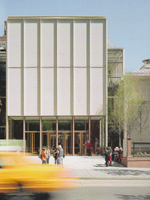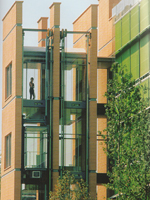International Art Books
Distributed By Trans-Atlantic Publications, Inc.
Click to see all titles
Renzo Piano Building Workshop
Visible Cities
Edited By Fulvio Irace
December 2007
Mondadori Electa, Milan, Italy
Distributed By Trans-Atlantic Publications
ISBN: 9788837052096
324 Pages, Illustrated, 11 1/8 x 9 7/8 "
$77.50 Hardcover
This catalogue focuses on the strong connection between Renzo Piano's architecture and the city paying homage in the title to Italo Calvino, a figure who has greatly influenced the architect's sensibility. Renzo Piano - Le città visibili opens the IV edition of Festa dell'Architettura, dedicated to the idea of the city as a central element in contemporary architecture.
This exhibition focuses on the strong connection between Renzo Piano's architecture and the city paying homage in the title to Italo Calvino, a figure who has greatly influenced the architect's sensibility. The exhibition offers a peculiar interpretation of Renzo Piano's activity in the years: from the prototype of Beaubourg in Paris to Lingotto Factory Conversion in Turin, from the cité internationale in Lyon to the port of Genoa and Potsdamer Platz in Berlin.
Besides, it illustrates Piano's intuitions about the possibilities deriving from the transformation of the old model of industrial city into that of the city of information and culture: from the experiments about the brown areas of Milan and Sesto San Giovanni, of Lyon and Paris, of Harlem in New York and Rotterdam, to the original hypothesis for a new distribution of the public and private spaces: the palace of New York Times, the London Bridge Tower, the Kpn Tower in Rotterdam and the never built skyscraper for Fiera di Milano.
In the book, drawings, pictures of the construction sites and the buildings are organized in two sections. The big cities housing Piano's most imposing works - New York, Paris, Milan, Genoa - and the cities grouped as places of thematic unity: the city of arts, the city of music, the city of waters, the city of people, the city. With their contributions, international architects and scholars - F. Dal Co, L. Ciagà, R. Rogers, C. Olmo, just to name a few - propose a new perspective to interpret Renzo Piano's production which has not been entirely studied yet.

